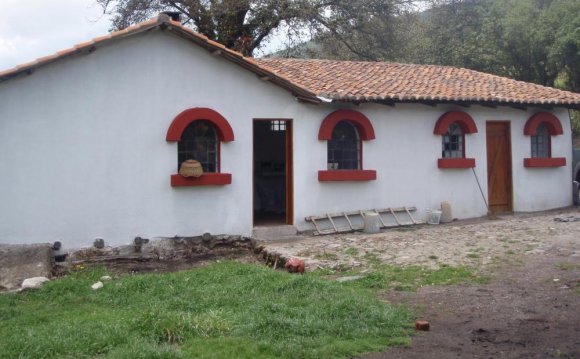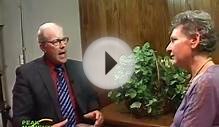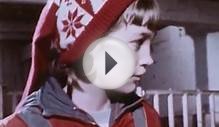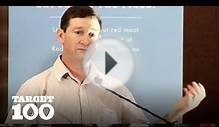
With Green Acre Radio this is Martha Baskin. Happy Mountain Farm. It sounds like the name of a children’s story. Pay a visit to the Covington based farm and you’ll find miniature cows roaming on grass land with groves of apple and hazel nut trees. And cows like PaulaSue chewing organic hay in the barn. “She’s a miniature Holstein. We’ve determined that she’s eating about one third of what a standard size Holstein will eat. She’s around forty-two inches tall {cow moos} but yet she can produce almost two-thirds the amount of milk.” Richard Gradwohl has been breeding mini-cows on this five acre farm for forty-four years. Before that he farmed on sixty-give acres closer to Seattle. When the cost of farm land began to skyrocket he decided to look for a way to raise cattle sustainanbly on fewer acres. The answer? Raise smaller animals. PaulaSue is about two-thirds the size of a regular sized Holstein. A bull calf named Jason, a Happy Mountain breed with the coloring of a Panda bear, is only thirty-two inches tall. “You can put more animals per acre because of their feed efficiency. So on five acres you can put ten animals. Now if you can raise ten animals on five acres think of the implications for the small farmer.” The implications for small farmers interested in profitable sustainable agriculture are big. Ten mini-cows on five acres results in a much higher yield compared to the norm of two regular sized cows on the same number of acres. Gradwohl uses meat as an example. An average mini-cow weighs between six and eight hundred pounds. “So six hundred to eight hundred pounds would give you a minimum of six thousand pounds of live weight beef on five acres.” Two regular cows, averaging 1200 pounds each, would yield only 2400 pounds of live weight beef.
Just as important, the cows are grass fed. No antibiotics, no growth hormones, and no costly corn or grain. Grass determines a cow’s health, says Gradwohl. “Cattle were always supposed to be eating grass instead of grain. Grain makes cattle sick and sothey give ’em all kinds of antibiotics and hormones and crap, pardon my French, which just makes them very, very bad from the standpoint of human beings.” Grass raised cattle produce meat rich in Omega3’s and 2’s and are known cancer inhibitors, says Gradwohl.
There’s also a win for the environment. According to a report by the United Nations Food and Agriculture Organization, livestock raised in feedlots and fed corn and antibiotics generate 18% of greenhouse gas emissions. Mark Kastel with the Cornucopia Institute, a progressive farm policy think tank isn’t that familiar with mini-cows, there’s only an estimated 50, 000 nationwide. But if they enable people with fewer acres to raise cows on grass he thinks it’s a good idea. “And if you’re one of the neighbors of these farms or downstream and you want to protect the groundwater, the surface water, our air quality, all the detrimental side affects of industrial factory farming, this is a good step in the right direction.”
The trend some sustainable cattle ranchers are taking in Eastern Washington is smaller conventional cattle rather than miniature cows. Morris Robinettte, a Cheney cattle farmer says the majority thinking in the grass fed industry is to raise cows that weigh between eight hundred and a thousand pounds instead of up to fifteen hundred pounds. Robinette, helped jumpstart “Beefing Up the Palouse”, a project to convert eroded land coming out of the Conservation Reserve Program into sustainably managed land for cattle ranching. “What I advocate is a process called planned grazing and it’s defined as putting animals at the right place at the right time for the right reasons.” When grazing is managed this way, says Robinette, then all ecosystems are enhanced. Many studies show that appropriate grazing by ruminant animals on native pastureland increases the biodiversity of species of grasses. Robinette keeps about one hundred fifty cows and alternatively grazes them on thirty-nine separate pastures over eight hundred acres. “It takes the impact of hooves and manure to keep the soil fertile and the plants robust.” When cattle were removed from the Conservation Reserve Program the ecosystem degraded. Cows aren’t the problem, its how they’re managed and what they’re fed, he says. “Have you seen the movie Food Inc.?” He refers to the graphic movie describing US industrial style farming. “Feedlots are only an economic efficiency and they wouldn’t be efficient if the externalities were paid for; in other words the amount of pollution and illness that’s created by those conditions. If those costs were covered in the price of beef nobody would raise beef in a feedlot.”
RELATED VIDEO












